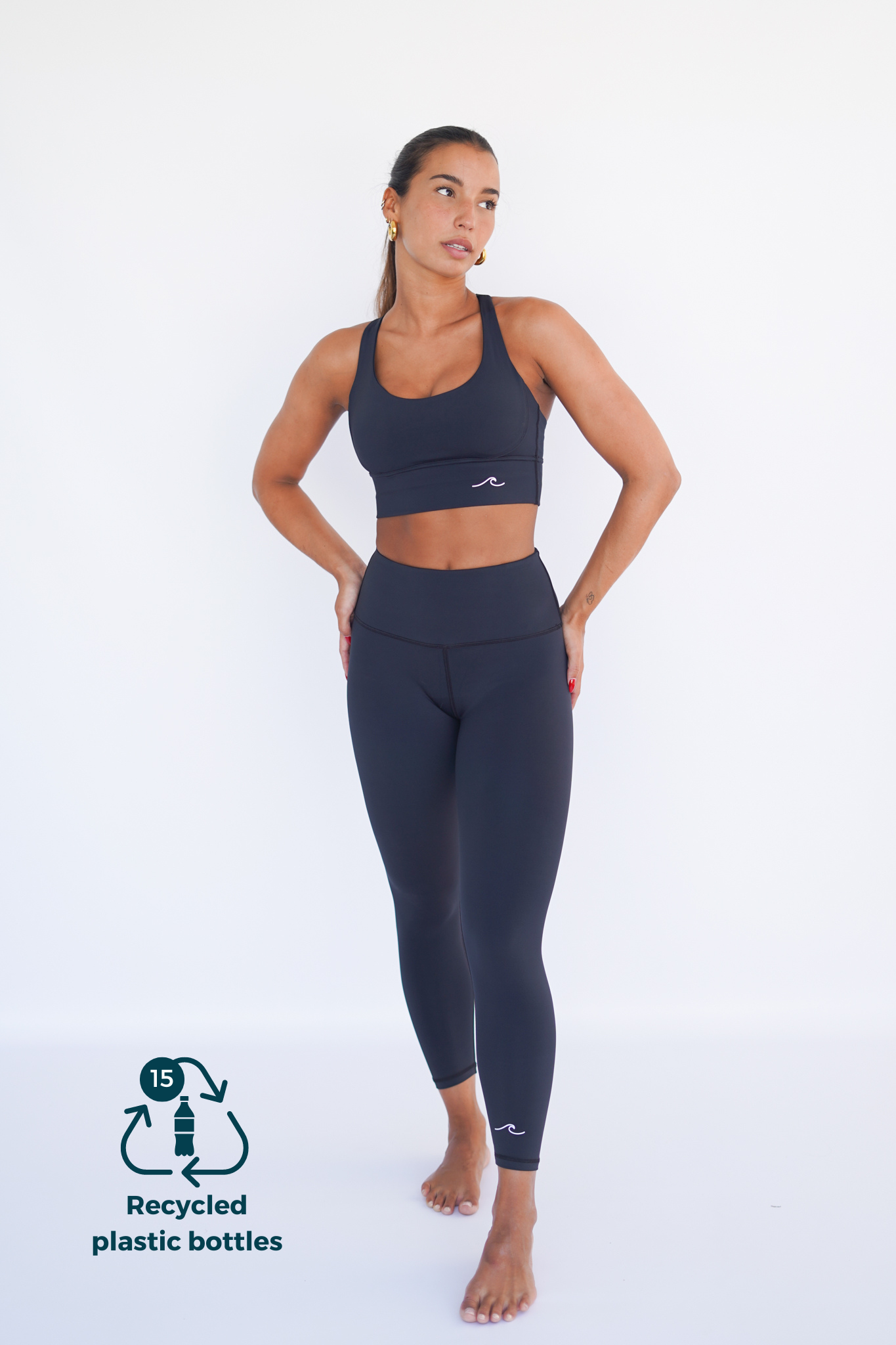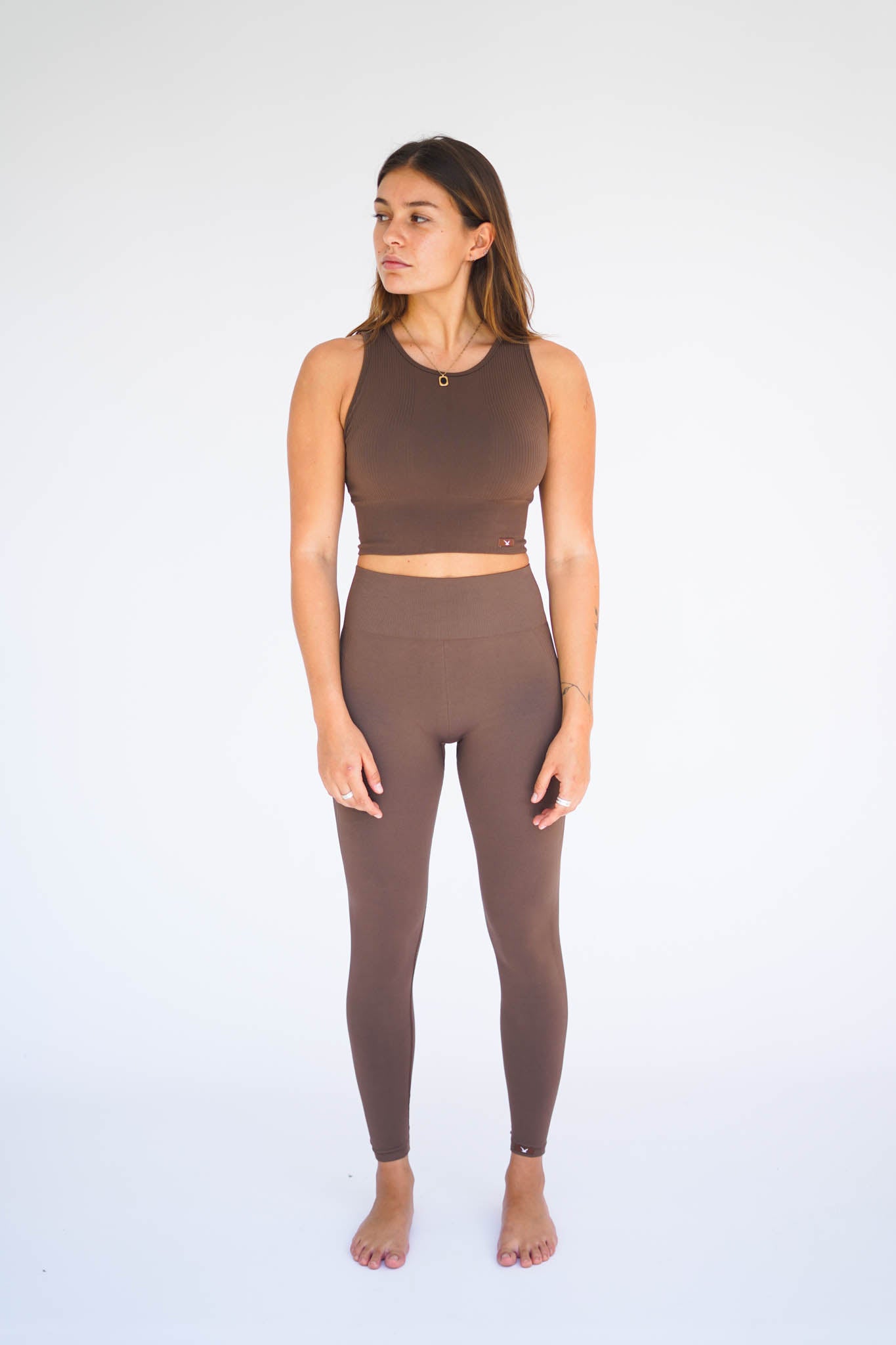
Yoga in Pregnancy: Complete Guide 2024
Pregnancy is a magical stage in a woman's life, but it can also be a time of physical and emotional changes that require attention and care. In this sense, the practice of yoga is presented as a powerful tool. Recognized for its low-impact nature, yoga is one of the most recommended activities during pregnancy. Not only will it help you stay fit, but it will also offer you emotional benefits, moments of relaxation and connection with yourself and your baby. In addition, prenatal aerial yoga can be essential to prepare your body and mind for childbirth, while promoting the health and well-being of your developing baby.
Is it good to do yoga during pregnancy?
The short answer is yes, yoga can be very beneficial during pregnancy, as long as it is done properly and with proper supervision. This ancient practice helps pregnant women keep their bodies strong and flexible, which is especially important as the abdomen grows. In addition, yoga fosters the mind-body connection, creating a space of calm and serenity amidst the changes experienced.
Please note that it is essential to consult a doctor before starting any physical activity, and to make sure that the routine is adapted to the specific needs and abilities of each pregnant woman. This applies to yoga as well as any other type of prenatal exercise.
What type of yoga is best for pregnant women?
For expecting mothers, prenatal yoga is the most suitable option. This form of yoga is specifically designed to suit the needs of pregnant women. It focuses on gentle movements and beginner-friendly yoga poses that are safe and beneficial at every stage of pregnancy. Additionally, many prenatal yoga classes include breathing and meditation techniques that help reduce anxiety and prepare the mother for childbirth.
Yoga postures for pregnant women in the first trimester
Early pregnancy is a complex stage due to the hormonal changes that occur and the possible appearance of nausea and vomiting. During the first trimester, your body is in a process of adaptation. There are some gentle, simple and relaxed postures that you can consider:
1. Cat-Cow Pose (Marjaryasana-Bitilasana): This combination of movements helps relieve tension in the spine and improves circulation.
2. Butterfly Pose (Baddha Konasana): opens the hips and improves elasticity in the lower body, strengthening the pelvic floor.
3. Chair Pose (Utkatasana): strengthens the legs and helps maintain balance.
It is also normal to feel a lack of energy during these first months. At this stage of pregnancy, more emphasis is placed on meditation and internal state.
Yoga postures for pregnant women in the second trimester
As you move into the second trimester, your energy may increase and it's a good time to incorporate postures that strengthen your body. Chairs or balls can be used to perform some exercises.
1. Warrior Pose II (Virabhadrasana II): helps strengthen the legs and improves stability.
2. Open Hip Pose (Supta Baddha Konasana): stretches the hips and promotes opening of the pelvic floor.
3. Bridge Pose (Setu Bandhasana): strengthens the back and opens the chest, as well as helping to combat fatigue.
In general, the asanas for the second trimester of pregnancy are aimed at relieving tension in the lower back, which is overloaded at this stage. Positions where the woman remains lying down are avoided, since the arteries can be put under pressure by the weight of the fetus, hindering blood flow.
Yoga postures for pregnant women in the third trimester
In the third trimester of pregnancy, the asanas are aimed at preparing for the moment of delivery. It is also essential to maintain comfort and connection with your baby:
1. Lady Pose (Savasana): This relaxation pose can help you release tension and connect with your baby.
2. Downward Facing Dog Pose (Adho Mukha Svanasana): Helps relieve pressure on the back and improves circulation.
3. Side Stretch Pose (Utthita Trikonasana): Stretches the sides of the body and helps open space in the abdomen for the baby.
These postures or asanas promote the opening of the hips and reduce the intensity of the contractions.
What yoga poses should you not do while pregnant?
Although yoga is a highly recommended activity for pregnant women, its practice should undoubtedly be monitored.
It is important to avoid yoga postures where the pregnant woman is lying on her back or inverted postures such as shoulder stand, as well as any posture that involves excessive stretching of the abdomen or compression of it, such as deep twists. Abdominal flexion postures are also not recommended to avoid compressing the abdomen.
Finally, it is advisable to avoid postures that require intense balance, especially in this last trimester, since the center of gravity changes.
Benefits of yoga during pregnancy
Yoga , combined with breathing control or “ pranayama ”, is a practice that helps to calm the symptoms and discomforts experienced during pregnancy. Through the breathing exercises carried out in yoga classes for pregnant women, a state of relaxation and peace is achieved that favors the connection with the baby, thus initiating the bond between mother and child. In addition, the diaphragm is exercised, an important aspect at the time of childbirth .
The benefits of prenatal yoga are numerous, including stress reduction , as breathing and meditation techniques help calm the mind and control stressful situations, preparing the woman to face the first contractions. Yoga also improves the flexibility of muscles and joints, which is crucial to prepare the body for childbirth. It also encourages muscle strengthening , especially of the pelvic floor muscles, resulting in greater strength during labor and a more effective recovery. Finally, thanks to visualization and meditation exercises, yoga makes it easier for women to emotionally connect with their baby , thus promoting an early and meaningful relationship.
Contraindications of yoga during pregnancy
Despite the many benefits, there are contraindications. If you have any of the following medical conditions, consult your doctor before beginning any yoga practice:
-
Vaginal bleeding
-
Heart disease
-
Uncontrolled gestational diabetes
-
High blood pressure.
-
Previous complications with pregnancies
Prenatal yoga is not recommended if you have any medical conditions or if there is a possibility of premature birth. You should also stop the practice and seek medical attention immediately if bleeding or breathing difficulties occur during the practice.
Tips for doing prenatal yoga at home
1- Create a comfortable space: Find a quiet place where you can stretch out and relax without interruptions. It should be a quiet, airy place free of distractions. It is important that you can lie down on the floor and that it allows free movement of your limbs.
2- Wear comfortable clothes: Invest in yoga clothes that are comfortable and flexible . Make sure your outfit allows for good mobility. Have you seen the collection of yoga clothes for women that Fitplanet has? They also have an online yoga store! If you go in, you will see their comfortable yoga sets for women , from summer sports sets to ideal winter sports sets.
3- The necessary materials are the following: to practice prenatal yoga, in addition to comfortable clothing you need a mat, a cushion, and relaxing music. The mat can be replaced by any material that insulates us from the ground and that does not slip when we move.
4- Music: Music is very important for creating a relaxing atmosphere and reducing stress. For this reason, it is very common to play music during yoga practice. However, it must have very specific characteristics. On the main music and video platforms on the Internet you can find lists of music especially for yoga.
5- Listen to your body: Pay attention to what your body is telling you. If you feel pain or discomfort, it is better to stop. Yoga is a technique that requires knowing each posture well; certain errors in it can cause harm.
6-Integrate breathing: It is advisable to monitor and concentrate on your breathing during exercise. Practice breathing exercises that help you relax and feel more connected to your baby.
7-Do short sessions: If you are new to this, start with short sessions, 15 to 20 minutes, and increase the duration as you feel more comfortable.
Conclusion
Yoga can be an incredibly empowering practice during pregnancy. It's not just about exercise, but a journey towards self-knowledge and emotional well-being. By adopting a prenatal yoga routine, you're not only helping yourself, but also creating a bridge of connection with your baby.
If you decide to embark on this adventure, make sure you go at your own pace and enjoy every moment. Remember that the most important thing is to take care of your health and that of your baby. As you explore yoga at this stage of your life, discover which postures and techniques make you feel best, and don't forget to do it in appropriate clothing that allows you to move freely! Namaste!







